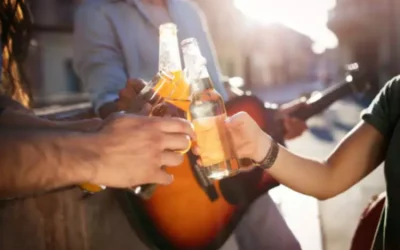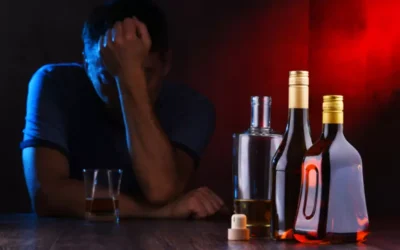Abstinence Violation Effect AVE
It is inevitable that the next decade will see exponential growth in this area, including greater use of genome-wide analyses of treatment response [109] and efforts to evaluate the clinical utility and cost effectiveness of tailoring treatments based on pharmacogenetics. Finally, an intriguing direction is to evaluate whether providing clients with personalized genetic information can facilitate reductions in substance use or improve treatment adherence [110,111]. The most promising pharmacogenetic evidence in alcohol interventions concerns the OPRM1 A118G the abstinence violation effect refers to polymorphism as a moderator of clinical response to naltrexone (NTX). This finding was later extended in the COMBINE study, such that G carriers showed a greater proportion of days abstinent and a lower proportion of heavy drinking days compared in response to NTX versus placebo, whereas participants homozygous for the A allele did not show a significant medication response [93]. Moreover, 87.1% of G allele carriers who received NTX were classified as having a good clinical outcome at study endpoint, versus 54.5% of Asn40 homozygotes who received NTX.
- Because the scope of this literature precludes an exhaustive review, we highlight select findings that are relevant to the main tenets of the RP model, in particular those that coincide with predictions of the reformulated model of relapse.
- Further, the more non-drinking friends a person with an AUD has, the better outcomes tend to be.
- In 1990, Marlatt was introduced to the philosophy of harm reduction during a trip to the Netherlands (Marlatt, 1998).
- There is an important distinction to be made between a lapse, or slipup, and a relapse.
Emerging topics in relapse and relapse prevention
A study published by Hunt and colleagues demonstrated that nicotine, heroin, and alcohol produced highly similar rates of relapse over a one-year period, in the range of 80-95%2. A significant proportion (40–80%) of patients receiving treatment for alcohol use disorders have at least one drink, a “lapse,” within the first year of after treatment, whereas around 20% of patients return to pre-treatment levels of alcohol use3. Relapse prevention (RP) is a strategy for reducing the likelihood and severity of relapse following the cessation or reduction of problematic behaviours4. While some assert that relapse occurs after the first sip of alcohol or use of another drug, certain scientists believe it is a process which more closely resembles a domino effect.
The reformulated cognitive-behavioral model of relapse
A basic assumption is that relapse events are immediately preceded by a high-risk situation, broadly defined as any context that confers vulnerability for engaging in the target behavior. Examples of high-risk contexts include emotional or cognitive states (e.g., negative affect, diminished self-efficacy), environmental contingencies (e.g., conditioned drug cues), or physiological states (e.g., acute withdrawal). Although some high-risk situations appear nearly universal across addictive behaviors (e.g., negative affect; [25]), high-risk situations are likely to vary across behaviors, across individuals, and within the same individual over time [10]. Whether a high-risk situation culminates in a lapse depends largely on the individual’s capacity to enact an effective coping response–defined as any cognitive or behavioral compensatory strategy that reduces the likelihood of lapsing. Harm reduction therapy has also been applied in group format, mirroring the approach and components of individual harm reduction psychotherapy but with added focus on building social support and receiving feedback and advice from peers (Little, 2006; Little & Franskoviak, 2010). These groups tend to include individuals who use a range of substances and who endorse a range of goals, including reducing substance use and/or substance-related harms, controlled/moderate use, and abstinence (Little, 2006).
1. Review aims
In the absence of triggers, or cues, cravings are headed toward extinction soon after quitting. But sometimes triggers can’t be avoided—you accidentally encounter someone or pass a place where you once used. Reflect on what triggered the relapse—the emotional, physical, situational, or relational experiences that immediately preceded the lapse.


Although the benefits of 12-step participation may (and quite often do) outweigh the added AVE risk, clinicians should be aware of this particular risk and take steps to counteract it. Considering the numerous developments related to RP over the last decade, empirical and clinical extensions of the RP model will undoubtedly continue to evolve. In addition to the recent advances outlined above, we highlight selected areas that are especially likely to see growth over the next several years. This is an open-access report distributed under the terms of the Creative Commons Public Domain License. You can copy, modify, distribute and perform the work, even for commercial purposes, all without asking permission.
Alcoholics Anonymous May Be The Most Effective Path To Abstinence, Study Says – CBS News
Alcoholics Anonymous May Be The Most Effective Path To Abstinence, Study Says.
Posted: Wed, 11 Mar 2020 07:00:00 GMT [source]
Integrating implicit cognition and neurocognition in relapse models
Recovery benefits from a detailed relapse prevention plan kept in a handy place—next to your phone charger, taped to the refrigerator door or the inside of a medicine cabinet—for immediate access when cravings hit. A good relapse prevention plan specifies a person’s triggers for drug use, lists some coping skills to summon up and distractions to engage in, and lists people to call on for immediate support, along with their contact information. The majority of people who decide to end addiction have at least one lapse or relapse during the recovery process. Studies show that those who detour back to substance use are responding to drug-related cues in their surroundings—perhaps seeing a hypodermic needle or a whiskey bottle or a person or a place where they once obtained or used drugs. Such triggers are especially potent in the first 90 days of recovery, when most relapse occurs, before the brain has had time to relearn to respond to other rewards and rewire itself to do so.
What Is The Difference Between A Lapse And Relapse?
- One study, in which substance-abusing individuals were randomly assigned to RP or twelve-step (TS) treatments, found that RP participants showed increased self-efficacy, which accounted for unique variance in outcomes [69].
- One night, she craves pizza and wings, orders out, and goes over her calories for the day.
- Social-cognitive and behavioral theories believe relapse begins before the person actually returns to substance abuse.
- In the absence of triggers, or cues, cravings are headed toward extinction soon after quitting.
- Finally, an intriguing direction is to evaluate whether providing clients with personalized genetic information can facilitate reductions in substance use or improve treatment adherence [110,111].
4. Current status of nonabstinence SUD treatment

